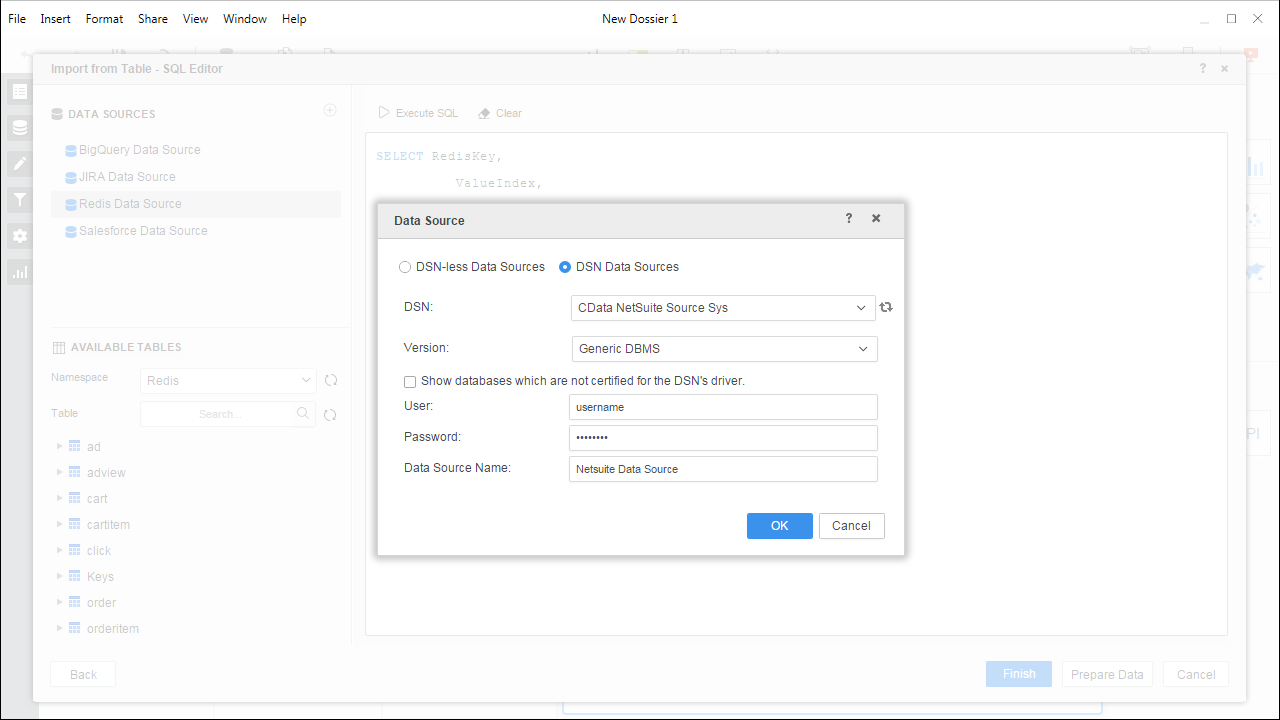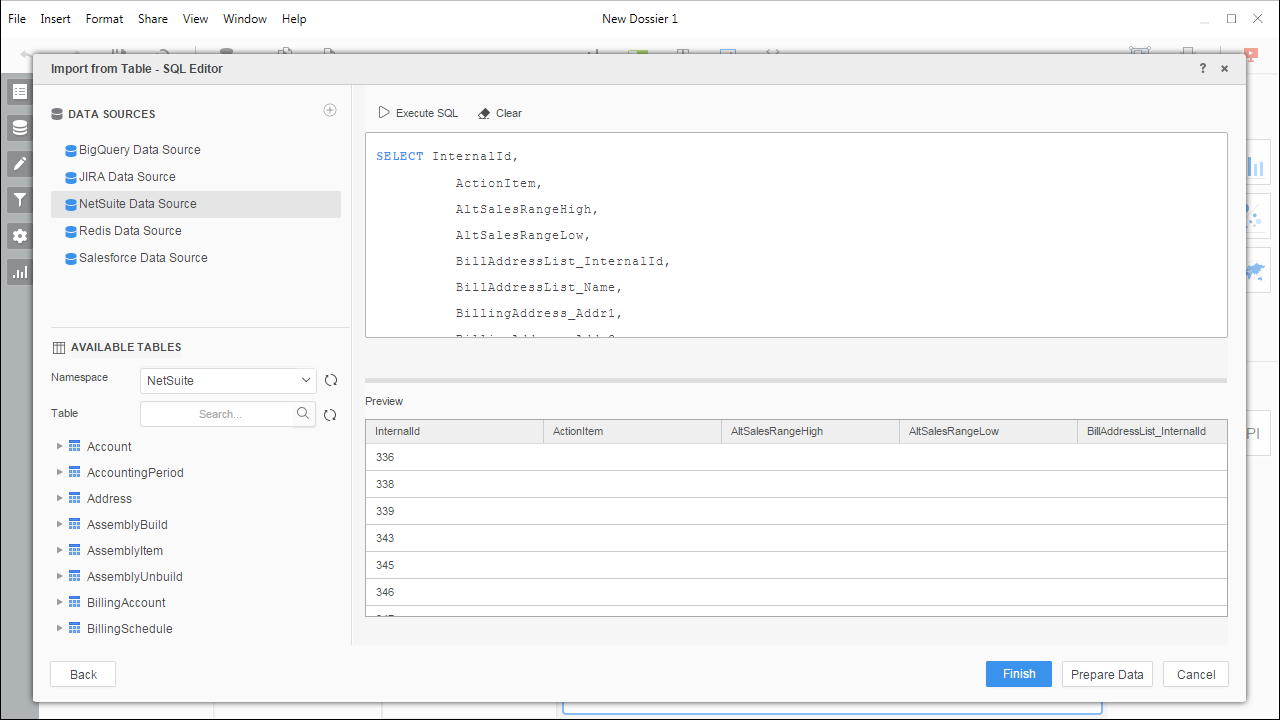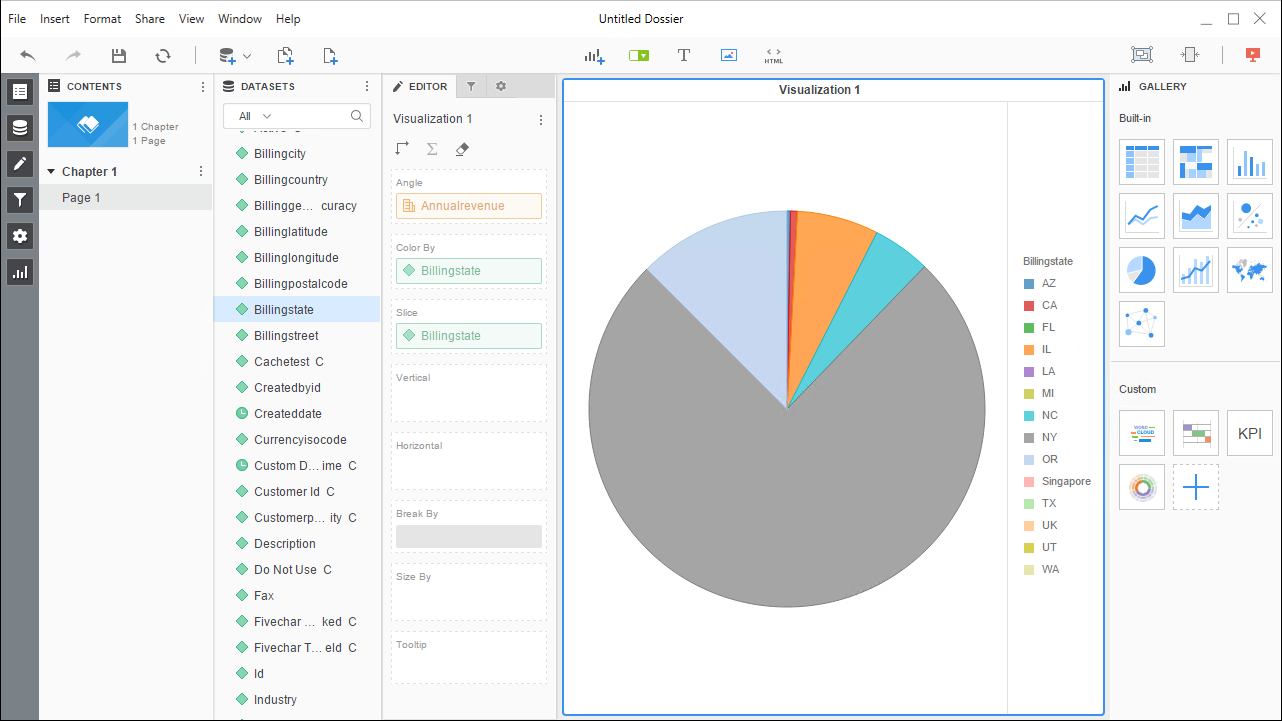Discover how a bimodal integration strategy can address the major data management challenges facing your organization today.
Get the Report →Use the CData ODBC Driver for Gmail in MicroStrategy Desktop
Connect to Gmail data in MicroStrategy Desktop using the CData ODBC Driver for Gmail.
MicroStrategy is an analytics and mobility platform that enables data-driven innovation. When paired with the CData ODBC Driver for Gmail, you gain database-like access to live Gmail data from MicroStrategy, expanding your reporting and analytics capabilities. In this article, we walk through adding Gmail as a data source in MicroStrategy Desktop and creating a simple visualization of Gmail data.
The CData ODBC Driver offers unmatched performance for interacting with live Gmail data in MicroStrategy due to optimized data processing built into the driver. When you issue complex SQL queries from MicroStrategy to Gmail, the driver pushes supported SQL operations, like filters and aggregations, directly to Gmail and utilizes the embedded SQL Engine to process unsupported operations (often SQL functions and JOIN operations) client-side. With built-in dynamic metadata querying, you can visualize and analyze Gmail data using native MicroStrategy data types.
Connect to Gmail as an ODBC Data Source
Information for connecting to Gmail follows, along with different instructions for configuring a DSN in Windows and Linux environments.
There are two ways to authenticate to Gmail. Before selecting one, first ensure that you have enabled IMAP access in your Gmail account settings. See the "Connecting to Gmail" section under "Getting Started" in the installed documentation for a guide.
The User and Password properties, under the Authentication section, can be set to valid Gmail user credentials.
Alternatively, instead of providing the Password, you can use the OAuth authentication standard. To access Google APIs on behalf on individual users, you can use the embedded credentials or you can register your own OAuth app.
OAuth also enables you to use a service account to connect on behalf of users in a Google Apps domain. To authenticate with a service account, you will need to register an application to obtain the OAuth JWT values.
In addition to the OAuth values, you will need to provide the User. See the "Getting Started" chapter in the help documentation for a guide to using OAuth.
When you configure the DSN, you may also want to set the Max Rows connection property. This will limit the number of rows returned, which is especially helpful for improving performance when designing reports and visualizations.
Windows
If you have not already, first specify connection properties in an ODBC DSN (data source name). This is the last step of the driver installation. You can use the Microsoft ODBC Data Source Administrator to create and configure ODBC DSNs.
Linux
If you are installing the CData ODBC Driver for Gmail in a Linux environment, the driver installation predefines a system DSN. You can modify the DSN by editing the system data sources file (/etc/odbc.ini) and defining the required connection properties.
/etc/odbc.ini
[CData Gmail Sys]
Driver = CData ODBC Driver for Gmail
Description = My Description
User = username
Password = password
For specific information on using these configuration files, please refer to the help documentation (installed and found online).
Connect to and Visualize Gmail Data using MicroStrategy Desktop
In addition to connecting Gmail in MicroStrategy enterprise products, you can connect to Gmail in MicroStrategy Desktop. Follow the steps below to add Gmail data as a dataset and create visualizations and reports of Gmail data.
- Open MicroStrategy Desktop and create a new dossier.
- In the datasets panel, click New Data, select Databases, and select Type a Query as the Import Option.
- Add a new data source and choose DSN data sources.
- Choose the DSN you previously configured (likely CData Gmail Sys) and select Generic DBMS in the Version menu.
- Set the User and Password properties for the DSN (or use placeholder values) and name the data source.
- Select the new database instance to view the tables. You may need to manually click the search icon in the Available Tables section to see the tables.
- Create a SQL query for the Gmail data (see below) and click Execute SQL to test the query.
SELECT * FROM Inbox![Querying Gmail for data.]() NOTE: Since we create a live connection, we can execute a SELECT * query and utilize the filtering and aggregation features native to the MicroStrategy products.
NOTE: Since we create a live connection, we can execute a SELECT * query and utilize the filtering and aggregation features native to the MicroStrategy products. - Click Finish and choose to connect live.
- Choose a visualization, choose fields to display (data types are discovered automatically through dynamic metadata discovery) and apply any filters to create a new visualization of Gmail data. Where possible, the complex queries generated by the filters and aggregations will be pushed down to Gmail, while any unsupported operations (which can include SQL functions and JOIN operations) will be managed client-side by the CData SQL Engine embedded in the driver.
![Visualize Gmail data.]()
- Once you are finished configuring the dossier, click File -> Save.

Using the CData ODBC Driver for Gmail in MicroStrategy Desktop, you can easily create robust visualizations and reports on Gmail data. Read our other articles on connecting to Gmail in MicroStrategy and connecting to Gmail in MicroStrategy Web for more examples.






 NOTE: Since we create a live connection, we can execute a SELECT * query and utilize the filtering and aggregation features native to the MicroStrategy products.
NOTE: Since we create a live connection, we can execute a SELECT * query and utilize the filtering and aggregation features native to the MicroStrategy products.
